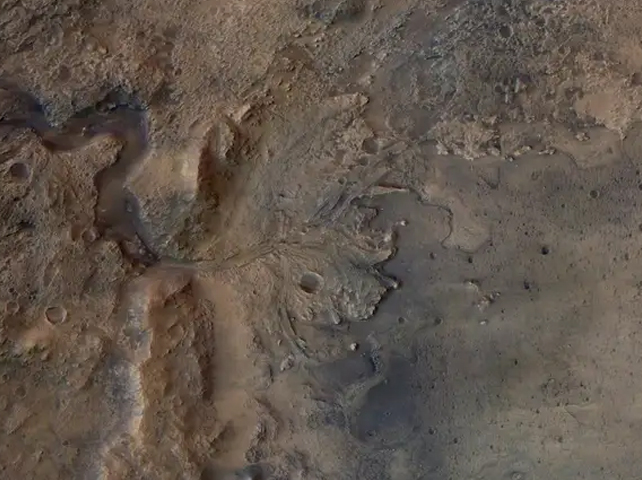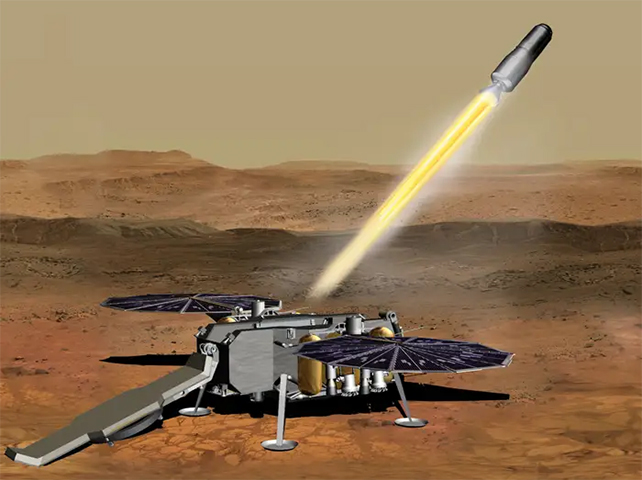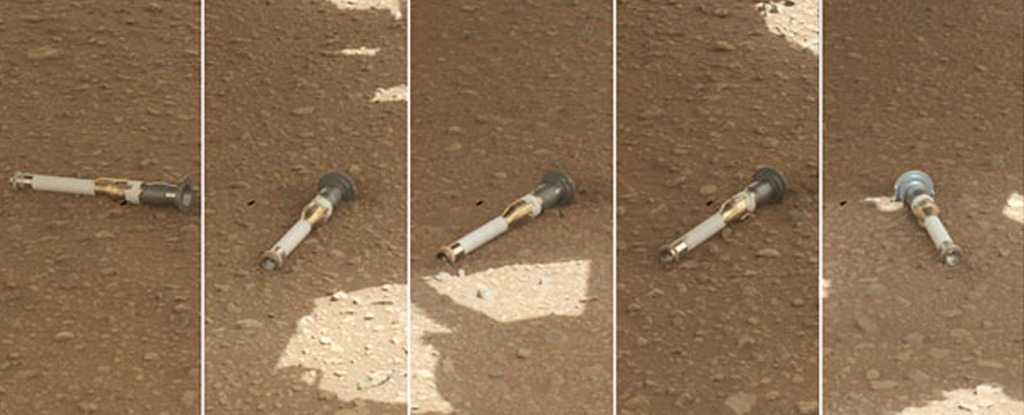Products You May Like
NASA bit off more than it could chew when it sent the Perseverance rover to Mars to collect samples.
The US$2.4 billion mission landed the rover in Jezero Crater, the site of an ancient lake. It’s the ideal spot to search for the fossils of Martian microbes that may have existed when the planet was lush with lakes and rivers.
Perseverance’s main mission is to collect samples of the rock and sediment along the lake bed and the crater rim, in hopes of finding a sign that life once thrived on the red planet. The rover has done a fine job – so far it’s secured 24 samples – but NASA no longer knows how it’s going to bring them to Earth for analysis.

NASA’s original design for the retrieval mission, called Mars Sample Return, has fallen apart. The agency is asking companies to step in and propose better ideas.
“We are looking at out-of-the-box possibilities that could return the samples earlier and at a lower cost,” Nicola Fox, head of NASA’s Science Mission Directorate, said in a press briefing on Monday.
“This is definitely a very ambitious goal. We’re going to need to go after some very innovative new possibilities for design, and certainly leave no stone unturned.”
NASA’s old plan costs $11 billion and takes too long
NASA’s original proposal for the Mars Sample Return is “mind-bendingly complicated,” David Parker, director of space exploration at the European Space Agency, said in 2021.
The idea was to launch two rockets toward Mars, one carrying a lander and one carrying an orbiter.
The lander would be the largest ever sent to Mars. It would touch down near the stash of samples that Perseverance set up, deploy a rover to fetch the sample tubes, and load them onto a small rocket attached to the lander.

Then the rocket would launch the samples into Mars orbit, where it would eject them toward the orbiter, which would be the largest spacecraft NASA ever sent to Mars.
The orbiter would have to grab the samples, journey back to Earth, and drop the sample vessel on a fiery plummet to our planet’s surface, where a team would retrieve them.
The mission plan relied about $4 billion in new technology and a decade of mission design and construction.
But the projected cost has ballooned to $8 to $11 billion since Perseverance touched down at Jezero Crater. Independent reviews have also concluded that instead of one decade to bring the samples to Earth, it would take two.
“The bottom line is that $11 billion is too expensive, and not returning samples until 2040 is unacceptably too long,” NASA Administrator Bill Nelson said in the briefing. “It’s the decade of the 2040s that we’re going to be landing astronauts on Mars.”
At the current price tag, Mars Sample Return would “cannibalize” other NASA missions, Nelson said. So the agency is calling all hands on deck, inside and outside of NASA, to come up with a new plan.
NASA wants companies with ‘tried-and-true’ technology
Fox said that NASA needs to see short proposals from companies or laboratories by May 17. Then the agency will choose a few of those competitors to further develop their ideas over a 90-day period, with complete proposals on NASA’s desk by late fall or early winter.
Some of NASA’s most tried-and-true contractors include Lockheed Martin, Northrop Grumman, Boeing, and SpaceX. Startups like Astrobotic and Intuitive Machines are getting their foot in the NASA door through the agency’s new moon program.
“What we’re hoping is that we will be able to get back to some more traditional tried-and-true architectures,” Fox said. “Anything requiring huge leaps in technology usually, from experience, takes a lot of time.”
As for the return trip from Mars to Earth, that will be a technological leap no matter what.
“We’ve never launched from another planet, and that’s actually what makes Mars Sample Return such a challenging and interesting mission because it really is the first of a kind,” Fox said.
This article was originally published by Business Insider.
More from Business Insider:
